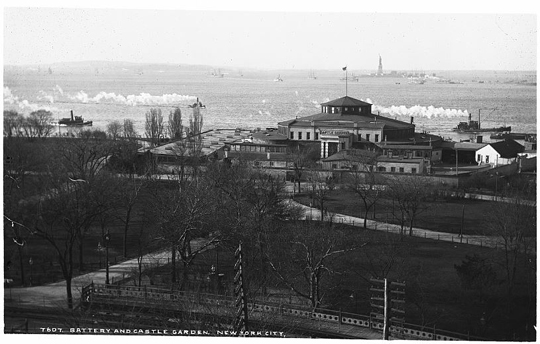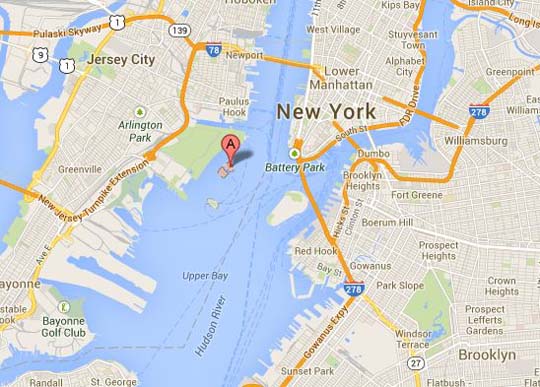Ellis Island Immigration Facts
| Tweet |
|
Ellis Island is a small island off the tip of Lower Manhattan. It operated as an immigration center from 1892 to 1954. During much of that time, Ellis Island was the main port of entry for immigrants to America.

Ellis Island processed an average of 5,000 people per day. A total of 12 million immigrants passed through the island over the years. As the table below shows, more immigrants passed through Ellis Island at its peak than all other North American ports of entry combined.
Port |
Number of Immigrants |
| Ellis Island | 706,113 |
| Baltimore | 69,541 |
| Boston | 64,358 |
| Montreal & St. John's | 33,048 |
| Philadelphia | 29,926 |
| Honolula | 11,439 |
| San Francisco | 9,504 |
| Key West Florida | 5,129 |
| New Orleans | 4,685 |
| New Bedford Mass. | 4,435 |
| Source: Ellis Island |
When looking at Ellis Island immigration records, here are the things you need to know:
• For an immigrant coming from Europe, the most expensive part of the journey from their home in the old country to their final destination in North America would have been the cost of buying a ticket on a transatlantic steamer. New York City had by far the most number of ships visiting its port.

• For many immigrants, New York City was the cheapest and most convenient port of entry to North America regardless of their final destination.
• Even immigrants to Canada could have chosen New York City as their port of entry (many crossings at the border between Canada and the US were totally open and had no customs or border officials).
• Anyone who had ancestors who arrived anywhere in North America in the forty-year period between roughly 1892 and 1932 should consider checking the Ellis Island immigration records.
• Not all immigrants were successful in entering the United States. Official statistics suggest about 2% of immigrants were rejected and sent home. The most common reason for rejection was a concern by immigration officials that the person may become a ward of the state. This could be due to health issues (especially a fairly common eye disease called trachoma, which led to blindness), mental illness or lack of sufficient funds for immigrants to support themselves.

•Immigrants were sorted based on their health condition, financial status and language. When looking at the records, don’t assume all your ancestors passed through Ellis Island. Some may have been sent home.

• Immigration officials also turned away communists, anarchists and bigamists. They did this by asking some rather ingenious questions: “Are you a communist?” “Are you an anarchist?” and “Are you a bigamist?” If a person answered ‘yes’ to any of the questions, they were rejected. If a person answered ‘no’ to any of the questions they were put aside for further questioning. The correct answer would have been: “What is a communist?”, "What is an anarchist?" and “What is a bigamist?”
• One hundred years ago, most people would not have been familiar with the terms communist, anarchist or bigamist. If they were aware of any of these terms then they may have been a communist, anarchist or bigamist and they were questioned in greater detail.

